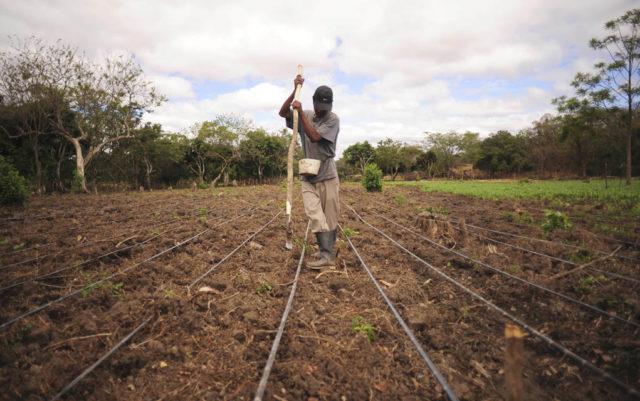
Workers from other countries are needed to grow American crops. So say many American farm owners, at least. And many further argue it’s because Americans can’t, or won’t, do farm work.
They have evidence. A much-publicized report from New American Economy found that out of the hundreds of thousands of unemployed Americans living in North Carolina, only a very small portion applied to available farm jobs in or next to their county of residence. With 6,500 jobs offered by the North Carolina Growers Association in 2011, only 268 of the 500,000 unemployed North Carolinians applied. Only 163 people showed up for the first day of work, and only seven finished the growing season.
And so farmers around the country rely on the H-2A visa program to bring in temporary workers from other countries to get through growing seasons.
“In all the time we’ve used the H-2A program, we’ve had two of 200 foreign workers not complete a contract,” says Bruce Talbott, a farm owner in Palisade. “During that same time, we’ve had only two Americans complete contracts, and that is only because we have moved them into equipment operation jobs. … Americans just do not want this intensive work for a time-limited harvest season.”
Talbott is one of several Colorado farmers who met Sen. Michael Bennet late February to try to reform the country’s migrant worker program, hoping that legislation is written to make it easier to bring in foreign workers for harvest seasons and utilize their skills once they’re here.
And these local farmers are hoping there is a window to address these changes as the debate over immigration policy gets a national spotlight.
Robert Sakata, president of the Colorado Fruit and Vegetable Growers Association (CFVGA) and owner of Sakata Farms in Brighton, says he was hoping changes would be made to the program ahead of the 2018 growing season. However, given the slow legislative process, farmers are now operating with uncertainty about how much help they’ll be able to get this year.
The lack of help in recent years has led to some CFVGA farms, which Sakata says include farms from large-scale operations to indoor grow facilities, no longer being financially viable.
“There are definitely those farmers making the decision not to continue because of the challenges with labor,” Sakata says.
He adds that the labor force, largely from Mexico and Central America, is eager to work during the American harvest season, when it is too hot to farm south of the U.S. growing region. This means farmers with experience and skill would come to the U.S., but only if the process were easier, Sakata says.
“These people are very highly skilled that want to work,” he says. “When you harvest cabbage, grocery stores want each one to be two pounds. When you grab that head of cabbage you have to have a sense if it’s going to meet that requirement.”
Sakata says CFVGA is asking for several changes to the H-2A program, which could be enveloped in another visa program, the H-2C program. They want no cap on the number of migrant farmers they can bring in, flexibility with where those farmers can work (workers can only be brought in to work on specific projects), a change to the requirement to provide housing to instead allow housing vouchers, and an adjustment to the required wage rates for migrant workers to factor in the costs of transportation and housing, which farmers are required to pay.
The tentative H2-C proposal makes payment for housing and transportation optional, sets a wage at no less than the state or local minimum wage and allows farm workers in certain industries (including hydroponic and dairy workers) to stay year-round.
You can see the fine line any adjustment to the program will have to walk — farmers can’t find qualified domestic workers, but they claim costs of housing (particularly in Boulder County, Sakata says) and transportation are too cumbersome to bring in foreign workers. But lowering wages or amending housing options, as CFVGA and others are requesting, would also lower the quality of life for migrant workers and their families.
Would a migrant worker net any money at Boulder County’s minimum wage of $10.20 per hour if they had to pay for transportation to and from the U.S. and housing while they’re here? Should the farmer who needs these workers to stay in business be required to subsidize those costs?
Adrian Card, the Colorado State University agricultural extension agent for Boulder County, says housing costs are “prohibitive” for farmers to house workers, which creates “a limiting factor to [County] growers who might want to use that program in the future.”
One major critique of both the New American Economy study and the H-2A system is that wages are so low, and the work can be so grueling, that more domestic workers would be willing to work on farms if wages were higher, to say nothing of improving the lives of the so-called required help of migrant workers with higher wages.
There are groups that have worked to fill in quality of life gaps for families of migrant farm workers. In Longmont, Casa de la Esperanza is home to 32 families and includes an educational center for the 100-plus children who live on site.
Changes to the visa program may likely come as part of an immigration bill, which has an uncertain timetable to say the least.














